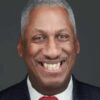According to a presentation by Katz Multicultural, Black American buying power has increased 48% from 2010 to 2019, with an estimated growth to $1.8 trillion by 2024! With the recent interest in creating a Black Wall Street, are people conflating having a physical Black Wall Street with using our Black buying power to close the wealth gap? Those strategies may overlap, but they are vastly different. Is it better to have Nia Grace’s restaurant in the Seaport or Nubian Square or both?
Since Jaylen Brown mentioned creating a Black Wall Street to reduce the wealth gap in Boston, there has been a lot of interest — even discussing where the physical location might be. Nicole Obi, the president and CEO of the Black Economic Council of Massachusetts, and Dr. Aisha Francis, president of Franklin Cummings Tech, argued convincingly in their Boston Globe Op-ed last month that the Black Wall Street should be in Nubian Square.
Should we try to recreate a Black Wall Street that in many cases was an artifact of segregation? Would such a concept work, given our attitude about self-efficacy has changed, as has the current retail environment, where online shopping is putting many retailers out of business?
When Black people are asked what a Black Wall Street means, some articulate something like Faneuil Hall Marketplace. Others point to a Black shopping district with barbershops, beauty salons, soul food and BBQ restaurants. Some highlight locally originated businesses owned by Black entrepreneurs, Black-owned national franchises or chains.
Fortunately, Obi and Francis’ vision of a Black Wall Street goes beyond retail.
Consider this analysis from Jeffrey L. Boney, who wrote a 2014 article titled, “From Black Wall Street to the Black Dollar Project.”
“The dollar circulates almost 10 times within the Jewish community before it reaches the outside. The dollar circulates almost six times within the Asian community before it reaches the outside,” Boney wrote. “The dollar circulates an infinite number of times within the white community, more than all other groups. Sadly, the African American dollar does not even circulate one time within its own community. As a matter of fact, the Black dollar only stays in the Black community less than six hours. This must change if we hope to address the issues of high unemployment, recidivism, crime and other critical issues impacting the African American community.”
African Americans’ buying power totals $1.1 trillion, according to Nicole Kenney, an NAACP economic program specialist, yet only 2 cents of every dollar an African American spends in this country goes to Black-owned businesses.
There is a strategy calling for Black people to buy only from Black people, and to hire Black people, which would help Black businesses. This is documented in Maggie Anderson’s book, “Our Black Year: One Family’s Quest to Buy Black in America’s Racially Divided Economy” and in her TEDx Talk. Many of Boston’s Black neighborhoods don’t have the necessary business mix to support buying Black or local exclusively. In Grove Hall, the business mix consists of hair and nail salons, take-out restaurants, convenience stores, bodegas, human service organizations and storefront churches. There are other challenges to buying Black exclusively.
Prices: Another challenge to shopping locally is the prices are often higher. Local merchants often purchase in smaller quantities than larger merchants, pay higher costs for insurance, and may experience higher levels of shrinkage. The merchant in turn passes these costs on to their customers.
Mentality: There are some people who believe the adage that, “The White Man’s Ice is Colder,” meaning products sold outside of the community are of better quality. But it is hard to quantify how true and to what extent this is believed.
Access to capital: Black businesses have identified market opportunities to serve the Black community only to be denied by white investors who don’t understand the need to dismiss serving Black people as a “niche market.”
The Golden Rule is, “He who has the gold makes the rules.” And currently, Black asset management firms manage only 1.1% of the total $71.4 trillion in assets. Less than 1% of all venture dollars go to startups founded by Black entrepreneurs.
The vision of a Black Wall Street in Boston embodies more than just a shopping district. It embodies a movement toward economic empowerment, community unity, and a reduction of the race wealth gap. It necessitates a collective commitment to support and invest in local Black businesses, fostering an environment where the dollar circulates within the community, ultimately leading to a brighter and more prosperous future for all.
Ed Gaskin is executive director of Greater Grove Hall Main Streets.







